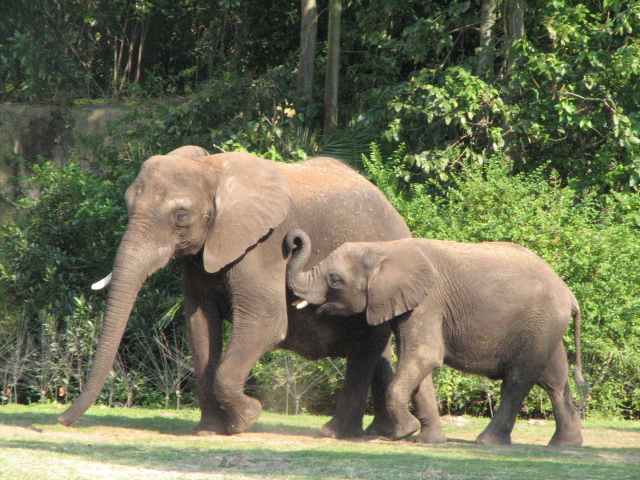For the first time, researchers have pieced back together the evolutionary pathway that allowed mammals to take over the Earth.
Scientists largely agree that the exit of the dinosaurs paved the way for their warm-blooded, bigger-brained counterparts, including ultimately us, to dominate life on Earth. But how quickly did mammals rise to prominence after the dinosaurs disappeared, and how long did it take before giants like mammoths and elephants appeared?
 Surprisingly, no one had previously tackled this question but now a paper in the journal Science, by University of New Mexico researcher Felisa Smith and her colleagues, has come up with some surprising findings. Using fossil evidence, the team painstakingly pieced back together the trajectory of mammalian evolution across all of the Earth's continents, superimposing information on body size for the different species, the amount of available land area, the average global temperature and oxygen levels.
Surprisingly, no one had previously tackled this question but now a paper in the journal Science, by University of New Mexico researcher Felisa Smith and her colleagues, has come up with some surprising findings. Using fossil evidence, the team painstakingly pieced back together the trajectory of mammalian evolution across all of the Earth's continents, superimposing information on body size for the different species, the amount of available land area, the average global temperature and oxygen levels.
What their data reveal is that within just 25 million years after the decline of the dinosaurs, which occurred about 65 million years ago, mammals had already shot up in size, increasing their maximum mass by up to 10,000 times from smallish creatures weighing up to 10kg during the dinosaur-dominated era, to 17 tonnes giants. What appears to have driven this size explosion is a combination of the amount of available land area and low global temperatures.
Large animals operate far more efficiently in cold temperatures than smaller beings for reasons of heat retention. So the ready availability of large supplies of food - in the form of prehistoric forests vacated by the dinosaurs and increased land area disclosed by falling sea levels as water froze at the poles, together with colder conditions overall strongly favoured the rapid evolution of large herbivores within just 25 million years.
According to University of Calgary co-author Jessica Theodor, "that's actually a pretty short time frame, geologically speaking. That's really rapid evolution." The findings also bust another myth, which is that the large species that evolved were merely the end-product of broad genetic diversity - because the large species came along so quickly.
As the team point out in their paper, "[dinosaur extinction] offered the ecological opportunity for mammals to become larger. They did so in an exponentially decreasing fashion, reaching a more or less maximal size by 40 million years ago as evolutionary possibilities for increasing body size were progressively exhausted and abiotic factors began constraining the upper limit."










Comments
Add a comment